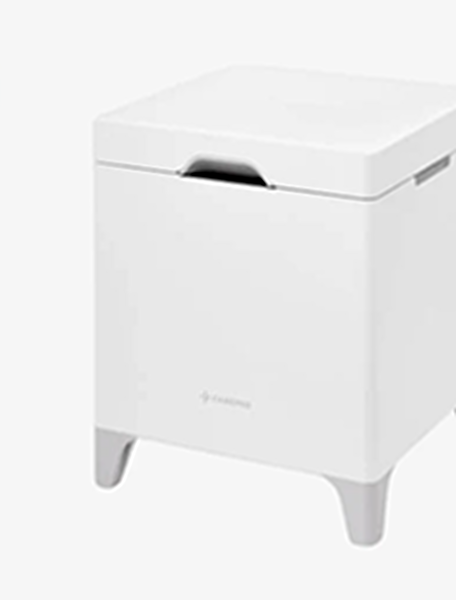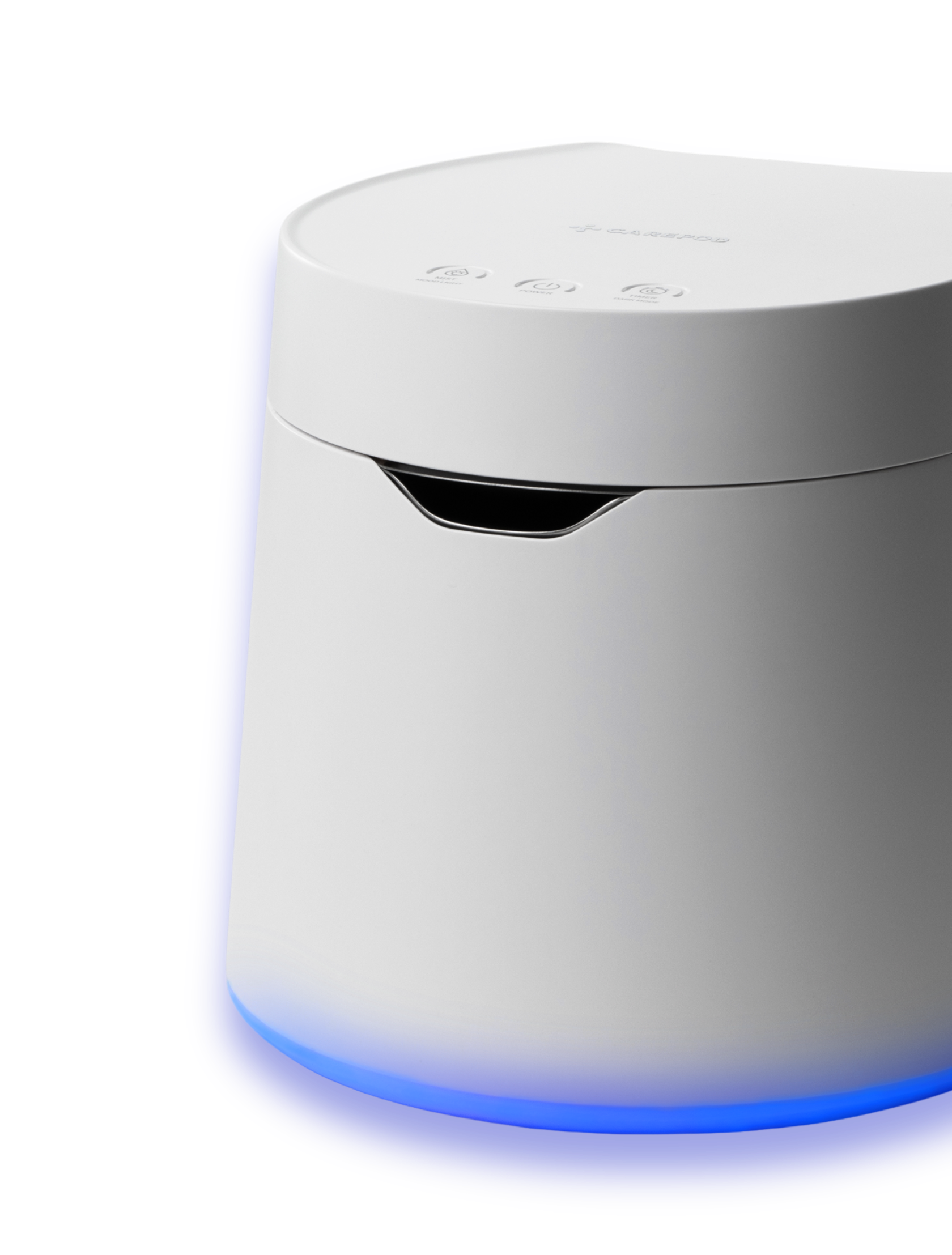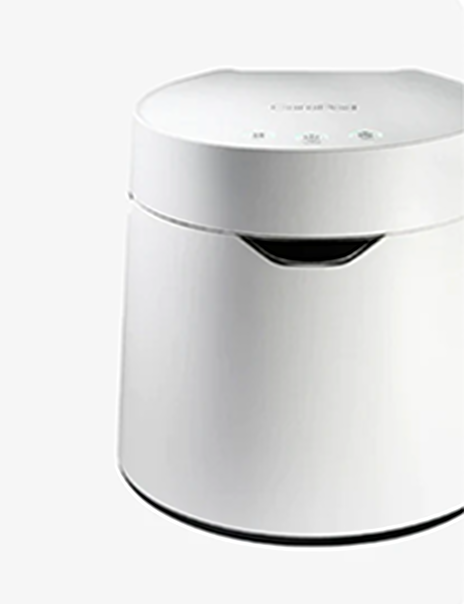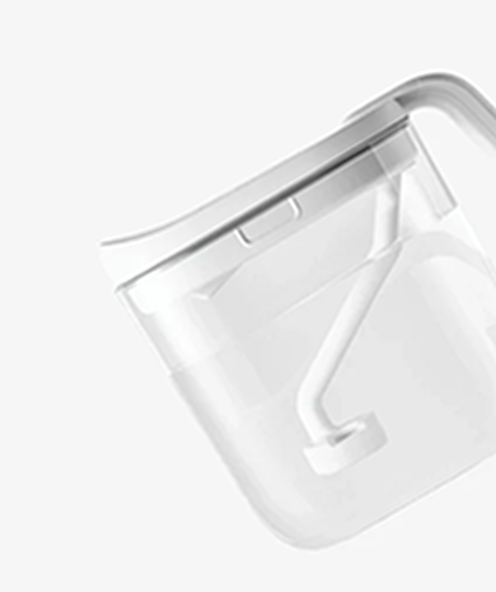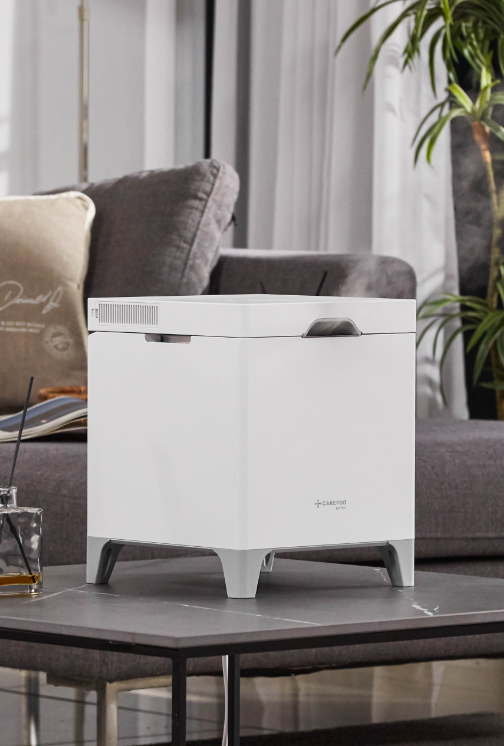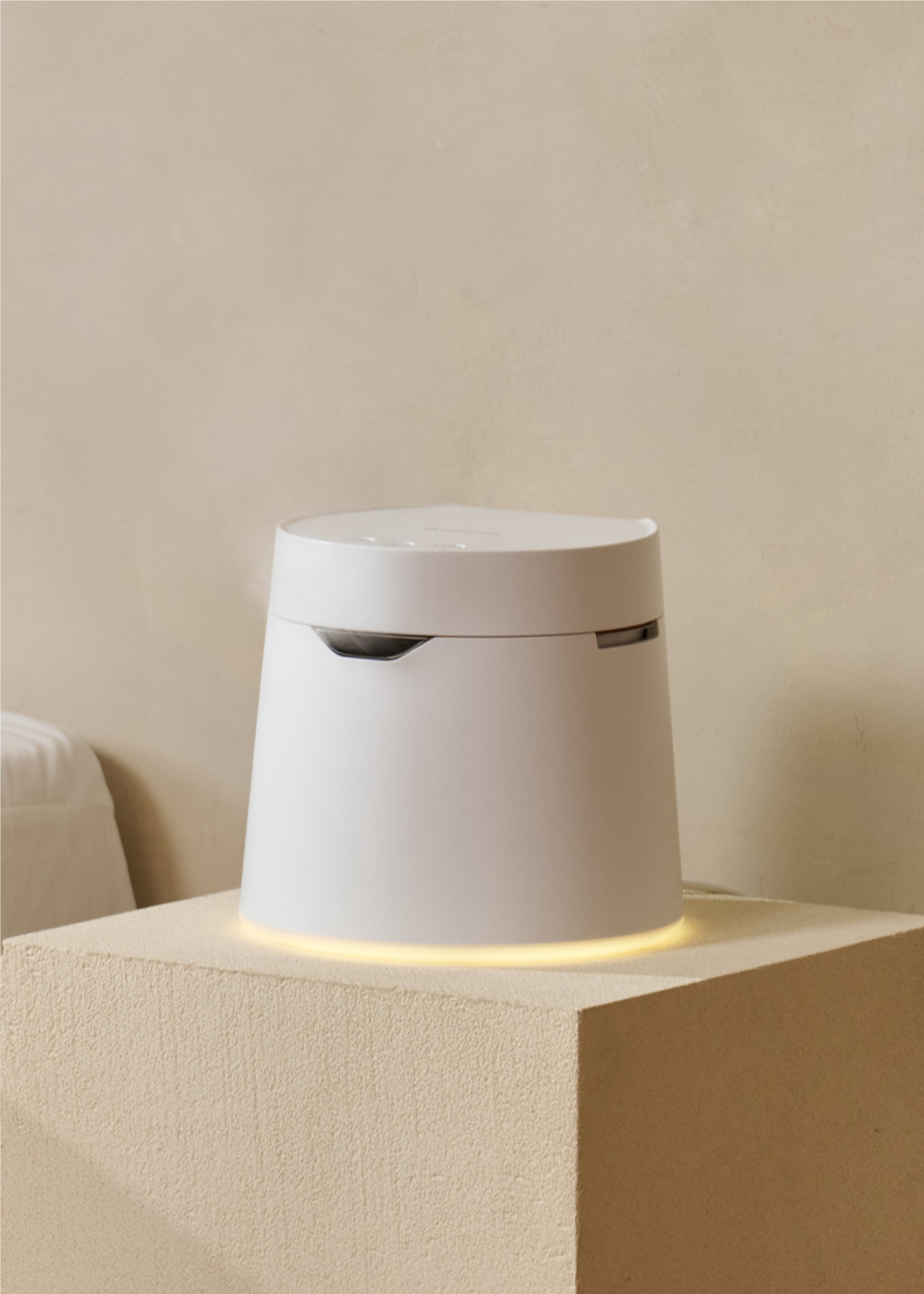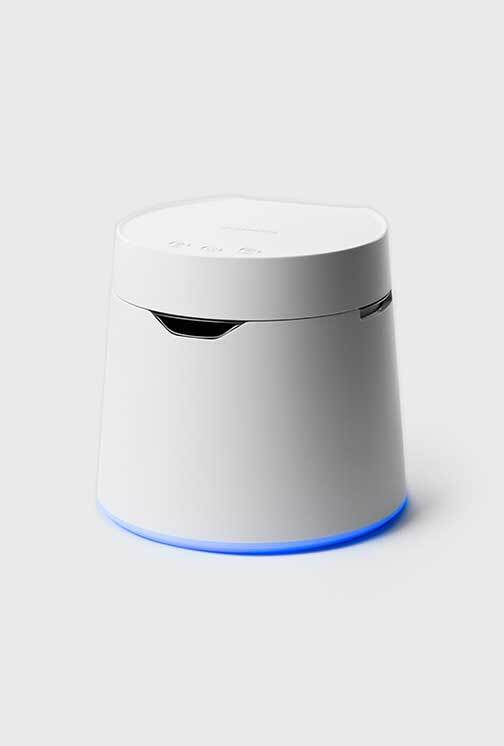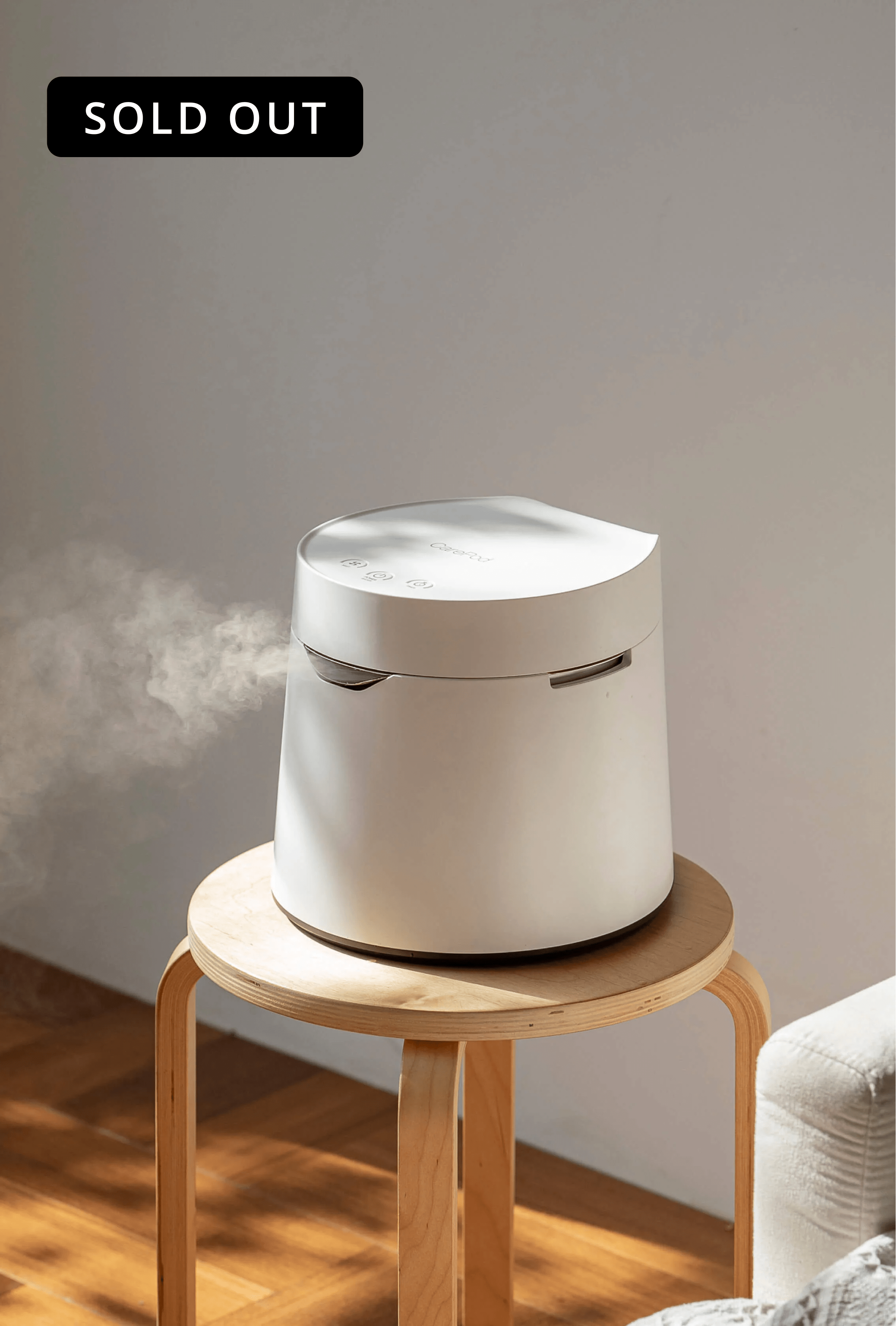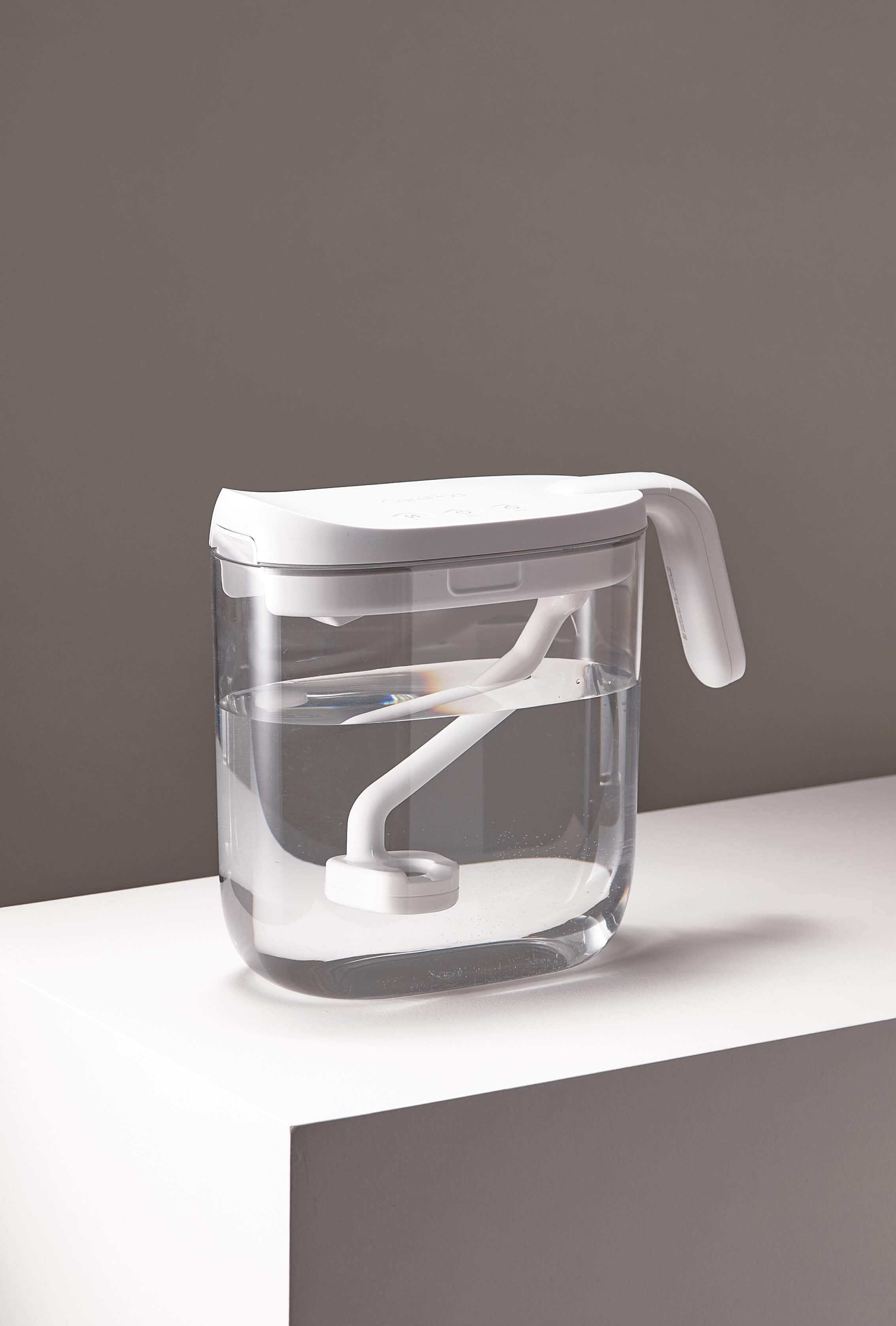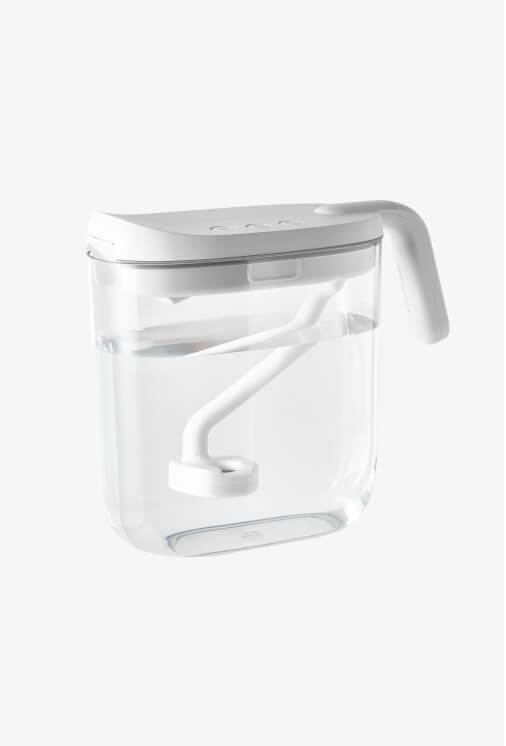REVIEWED: Honeywell HCM-350 vs. Carepod One

If you're looking to improve your health and wellbeing, you might be interested in purchasing a humidifier… well, you’ve come to the right place! Research shows that there is much to gain from using a humidifier -- moisturized skin and hair, cold and allergy relief, and reduced infection rates for pathogens like COVID-19, among other various benefits.
However, deciding to get a humidifier is actually the easy part of the process. When looking up options to choose from, humidifier newbies are often confronted with a long and tedious list of brands, labels, and models. So how do you pick which one to buy?

Luckily, we're here to help you out. In the third installation of our "REVIEWED" series, we’ll give you the rundown on the Honeywell HCM-350 and compare it with our own Carepod One. We’ll discuss essential considerations, which include operation, features, design, cleaning, and price.
In the end, we hope you'll be able to make an informed decision about which humidifier best suits your needs and preferences.
So, without further ado, let's get into it!
Operation
While both get the job done, Honeywell and Carepod function very differently. One of the key points of contrast between the two is how they actually create moisture.

(Image Source | Honeywell Store)
Honeywell HCM-350 is an evaporative humidifier. This type of humidifier uses a wick to draw up water from the tank and a built-in fan to blow over the water, allowing it to evaporate and leave the device as cool vapor.

Meanwhile, the Carepod humidifier utilizes ultrasonic technology. The device uses an oscillating drum, which creates high-frequency vibrations that break up the water into microscopic droplets. These particles are then released by the device and expelled into the air as mist.
(To learn more about evaporative and ultrasonic humidifiers, check out the links above in bold)
As discussed in our Canopy vs. Carepod article, there are various advantages to each model type. For instance, ultrasonic humidifiers tend to be quieter than evaporative humidifiers and are typically more effective at producing moisture. However, this can become a problem if it results in over-humidified air.
Evaporative humidifiers, on the other hand, are self-regulating, meaning that the device’s humidification process naturally slows down as the moisture level in the room increases. This way, you won’t have to worry too much about excessive humidity.
Both Honeywell and Carepod’s models both boast impressive coverage areas of 700 square feet and 500 square feet respectively, which is more than enough for small and medium sized rooms in the house.
Features
When choosing a humidifier, it’s important to consider the features you desire in an appliance. Some models may prioritize certain aspects that suit your needs and preferences, like aroma diffusion or customized settings.
Run Time

(Image Source | Consumer Reports)
The Honeywell humidifier can run up to 24 hours on the low setting before shut down, which is quite impressive. However, as Honeywell does not have a timer feature, it must be manually shut down by the user.

On Carepod humidifiers, there is a time scheduling function -- users can set the device to run for 2, 4, or 6 hours before auto shut-off. Carepod can also run up to 10 hours continuously.
Aroma Diffusion
Lately, aroma diffusion has become a popular and desirable feature in humidifiers, as it allows users to simultaneously humidify and scent their room.

(Image Source | Honeywell Store)
The Honeywell HCM-350 humidifier does not have aroma diffusion capabilities, while Carepod One does. To diffuse a scent into the air, all you have to do is add a drop of essential oils onto the side of the top lid.
Settings
Both humidifiers allow the user to set the humidity level to their liking.
Honeywell has Low, Medium, and High "speed settings" -- the faster the fan runs, the greater the humidity output is. Similarly, Carepod allows you to choose between Low, Medium, and High mist intensity.
Filters

(Image Source | Amazon)
The Honeywell HCM-350 requires a replaceable water filter, which serves to capture minerals from the water and prevent the buildup of white dust. This filter must be replaced between every 30-60 days and costs about $162 per year if bought individually. In fact, with any evaporative humidifier, you’ll have to periodically purchase and replace the water filter — otherwise, there may be a high risk of contamination.

Carepod, on the other hand, does not require a water filter. It does have a small air filter at the air vent, but this does not need to be replaced.
Design

(Image Source | Honeywell Store)
Honeywell is a fairly tall and large humidifier, with dimensions of 17.9" x 9.37" x 11.4". The device has a rectangular structure, but the edges are smooth and sleek. It would sit best atop a table, but may be too large for smaller bedside and side tables.

Meanwhile, Carepod is more compact than Honeywell. Its dimensions are 10.82" x 10.23" x 9.30". With a cylindrical body, it is roughly the size and shape of a small rice cooker and can fit on any small table, countertop, or nightstand.
Carepod's innovative, patented design has received various notable awards. "This product offers a perfect example of how to place a complex functional device within a clean and simple outer design," describes iF World Design Guide. "The form is attractive yet also matches the function as a humidifier, while its color and outer design, including the top display and touch buttons, make intuitive usage possible."
As for tank size, Carepod and Honeywell can both hold considerable amounts of water. Honeywell's tank is slightly larger than Carepod's, holding 1.1 Gallons, while Carepod can contain 1 Gallon.
Cleaning
When purchasing your humidifier, it’s essential that you consider how easy and effective it is to clean the appliance.
After all, it’s come to many peoples’ attention — especially recently — that if not properly cleaned, humidifiers can become a breeding ground for mold and bacteria. This cause for concern is justified, as these contaminants can spread into the air alongside water droplets/vapor and cause nasal and lung infections as well as other respiratory symptoms.

(Image Source | Honeywell Store)
The cleaning process for Honeywell is carefully explained on their website. At least once a day, users are instructed to rinse out their humidifier and fill with fresh water. Then, at least once a week, Honeywell must be completely descaled and disinfected. To do so, the humidifier should be disassembled and then cleaned in a process using vinegar and a bleach solution.

Honeywell’s website states, "You can then proceed to clean your humidifier with white vinegar by adding 2 cups through the water tank. This process will remove excess mineral deposits. Allow for a total of 15-20 minutes to pass before emptying. To disinfect your portable humidifier, add 1/2 a table spoon of bleach solution to the water tank. (Do not exceed 1/2 a tablespoon as this can potentially damage your humidifier). Swish the solution in the tank. The bleach will then drain into your humidifier's water reservoir while disinfecting other components as it soaks."
Honeywell also utilizes a UV germ killing process, but this is not supposed to replace the cleaning process and only must be used in addition.

Meanwhile, Carepod is unique in that it allows for ease of cleaning by hand. The device can be simply detached into three pieces -- the tank, vibrating element, and cover. These parts are to be hand-washed either with soap or sterilized in boiling water. You can learn more about the cleaning process here.

Furthermore, Carepod is made of a SS304 Premium Grade steel interior and, notably, the same kind of material used in hospital settings. Not only is it fully recyclable, but it’s also resistant to corrosion and disinfectable. In fact, Carepod's model has shown 99.99% sterilizability against bacterial growth in research trials, higher than that of any leading brand.
Price

The price of the Honeywell HCM-350 differs depending on where it is purchased from, but it’s listed at $99.95 on Honeywell’s online store.
In addition to the humidifier, users must purchase the Honeywell HAC-504 Replacement Filter A, which costs $19.95 and must be replaced at least every 30-60 days. This brings the annual price of the Honeywell HCM-350 to anywhere between $121.36 to $242.73.
On the other hand, the price of a Carepod humidifier is $275. As no filters need to be purchased, there are no additional costs for upkeep.
Carepod has a 30 day return policy. Honeywell does not state that they allow returns on their website. However, both products come with a warranty. Carepod's warranty is 1 year and Honeywell's is 3 years. In other words, if customers are dissatisfied with their device or if the humidifier breaks, they can replace it for a new one at no additional cost.
Final Thoughts
In summary, both the Honeywell HCM-350 and Carepod One are great investments, though one might work better for some than for others. It all boils down to your personal needs and preferences.
The Honeywell humidifier will better suit customers that prefer an evaporative humidifier which can run for a long period of time without hassle. Meanwhile, Carepod is better for those who seek easy maintenance, specialized features like aroma diffusion and time scheduling, and a compact and sleek design.
No matter which model you decide on, we applaud you for your decision to prioritize your health and upgrade your indoor space.
Check out other reviews in our blog, including Dyson vs. Carepod and Canopy vs. Carepod.